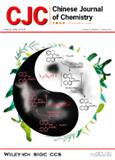
中国化学(英文版)(Chinese Journal of Chemistry) 万方目次维普目次
- CSCD
- 科核
- 主管单位:
中国科学技术协会
- 主办单位:
中国化学会、中国科学院上海有机化学研究所
- 国际刊号:
1001-604X;EISSN1614-7065
- 国内刊号:
31-1547/O6
- 学科分类:
- 字数:
6000-16000
- 有无基金:
/有基金 100.0%
- 周期:
CN外文-半月刊
- 特殊属性:
第一批认定学术期刊,外文期刊
- 电话:
- 邮箱:
masm@mail.sioc.ac.cn(主编)cjc@sioc.ac.cn(编辑部)(官网邮箱)
- 复合因子:
1.926
- 综合因子:
1.518
- 收录:
万方目次,维普目次
- 级别:
CSCD,科核
期刊简介
《中国化学》期刊已被查看: 次
更新频次
低频栏目:
2004年12期文章-16.7%-期平均发文量18篇
2004年11期文章-16.7%-期平均发文量34篇
2004年10期文章-16.7%-期平均发文量32篇
2004年09期文章-16.7%-期平均发文量36篇
2004年08期文章-16.7%-期平均发文量26篇
2004年07期文章-16.7%-期平均发文量31篇
单位占比
其他-100.0%一作占比
/有基金-100.0%投稿指南
1、投稿方式:在线投稿。
2、刊内网址:(202304期)
http://mc.manuscriptcentral.com/cjoc(投稿系统)
http://www.cjc.wiley-vch.de
自动跳转至:
https://onlinelibrary.wiley.com/journal/16147065
3、出刊日期:半月刊,每月1日、15日出版。
2023年11月20日星期一
《中国化学(英文版)》作者指南
【官网信息】
Chinese Journal of Chemistry
Instructions for Authors
Editorial Office
Mr. Bingfeng Pan
Shanghai Institute of Organic Chemistry (SIOC)
Chinese Academy of Sciences (CAS)
345 Lingling Road Shanghai 200032 P.R. China
Tel.: 86-21-54925243
Fax: 86-21-54925285
E-Mail: cjc@sioc.ac.cn
Editor-in-Chief
Prof. Dr. Shengming Ma
SIOC & Zhejiang University & Fudan University
E-Mail: masm@sioc.ac.cn
1 General
The Chinese Journal of Chemistry is an international peer-reviewed journal published in English. It publishes original research work in all fields of chemistry in the form of Recent Advances, Critical Reviews, Chemistry Authors Up Close, Breaking Reports, Concise Reports, and Comprehensive Reports. The journal is published twelve times a year by the Shanghai Institute of Organic Chemistry and Wiley-VCH. The Chinese Journal of Chemistry is an official publication of the Chinese Chemical Society and is available online at www.cjc.wiley-vch.de.
Authors are solely responsible for the contents of their contribution. It is assumed that they have the necessary authority for publication. The contents of manuscripts submitted to Chinese Journal of Chemistry must not have been submitted to any other journal in parallel or published previously. Any manuscript already available on personal/group web pages will be considered by the Editors as already published and will not be accepted. The authors must inform the Editors of manuscripts submitted to, soon to be submitted to, or in press at other journals that have a bearing on the manuscript being submitted. All submissions must adhere to the Ethical Guidelines for Publication in Journals and Reviews of the European Association of Chemical and Molecular Sciences (EuCheMS). In particular, authors should reveal all sources of funding for the work presented in the manuscript and should declare any conflict of interest.
All articles must be written in English.
All submitted manuscripts that are suitable for consideration will be sent to independent referees. Manuscripts which are clearly inappropriate for the journal can be rejected without consulting referees. Authors are encouraged to suggest suitable referees (full names and affiliations including e-mail address). However, the referees that are contacted will not be limited to those nominated by the authors. All accepted manuscripts are edited before printing to ensure scientific consistency, clarity of presentation, and uniformity of style.
If authors have to or want to make their publications freely available at the moment they are published (open access), the Chinese Journal of Chemistry offers such a service. Under the keyword OnlineOpen you can find all the information about this subject on our homepage.
On behalf of our authors who are US National Institutes of Health (NIH) grantees, we will deposit in PubMed Central (PMC) and make public after 12 months the accepted, peer-reviewed version of the author's primary research manuscript. By assuming this responsibility, we will ensure our authors are in compliance with the NIH request, as well as make certain the appropriate version of the manuscript is deposited. We reserve the right to change or rescind this policy. For more information, please go to http://www.wiley.com/go/funderstatement. To guarantee that your publication is uploaded correctly in PMC, please make sure that 1) the NIH grant numbers are free from misspellings (that is, no small o instead of a 0, no small i instead of a 1, no spaces or hyphens, etc.) and 2) the e-mail address that is known at NIH/PubMed is identical to the one given in the publication.
In general we recommend that authors link on their homepage to their Chinese Journal of Chemistry publication through the "Digital Object Identifier" (DOI). Only in this way can Crossref function correctly and full-text downloads be tallied.
2 Submission of Manuscripts
The Chinese Journal of Chemistry offers web-based manuscript submission and peer-review via ScholarOne Manuscripts.
This service guarantees fast and safe submission of manuscripts and rapid assessment processes. Online submission is mandatory, and conventional submission of manuscripts via courier service or e-mail is no longer accepted. Please prepare your manuscript in keeping with the guidelines given below (§4).
For the submission of new, revised and final accepted manuscripts, a single Word DOC file containing graphical abstract, text, tables and all graphics should be uploaded as “Main Document” on the File Upload screen. Tables and all graphics need to be embedded in the text of the DOC file where they belong (not collected at the end). MS Word templates, which can be used for preparation of new manuscripts, are available at www.cjc.wiley-vch.de under “For Authors”. Note: Do not choose the file designation “Image” to upload graphics as separate files when uploading new manuscripts. Supporting Information is uploaded as a single, separate PDF file with all graphics embedded by choosing the file designation “Supporting Information”.
Steps for using the Chinese Journal of Chemistry online submission system:
• Go to http://mc.manuscriptcentral.com/cjoc.
• If you use the system for the first time, you need to click on the “Create Account” link. If you have been an author or referee for Chinese Journal of Chemistry recently, your e-mail address will already be in the database. In that case, enter your e-mail address under “Password Help” on the Log In screen. You will receive an automatically generated e-mail, providing you with the details to your personal homepage (login and password).
• Once logged in, please click on “Author Center” and let the system guide you through the submission process. Online help is available at all times. It will be possible to exit and reenter the system without losing any information at any stage of the submission process. All submissions are kept strictly confidential.
• If applicable, please choose a Special Issue to which you have been invited to contribute.
• Authors can follow the progress of their manuscripts on their personal homepage: all manuscripts of the authors submitted to and all review reports written for Chinese Journal of Chemistry are archived here. This homepage should also be used to upload the revised and final versions of all manuscripts submitted to Chinese Journal of Chemistry.
Note: When multiple files are uploaded as “Main Document” or “Image”, the system generates a single PDF file. Only Word DOC and TIFF files are included in the PDF file generated. File formats not included are Excel XLS, PowerPoint PPT, ChemDraw CDX, ISIS Draw SKC, GIF, PCT, PSD, BMP, 123, RAR, SIT and ZIP.
Authors are asked to make their manuscripts suitable for a heterogeneous readership - please use a simple, clear style, and avoid jargon. In some cases, it might be helpful for manuscripts to be checked by a third party, such as Wiley English Language Editing Services for correct language usage before submission.
3 Types of Manuscripts
Recent Advances are review-type articles that present very important recent topics in a concise manner at a time when a Critical Review would still be premature.
Critical Reviews are in-depth discussions on important topics of broad interest.
Chemistry Authors Up Close will include a photo of the chemist, an interview by our staff followed by a personal account of the most favorite chemistry developed in his/her laboratory with demonstrated applications by his/her own group or others.
Breaking Reports are brief reports containing urgent and significant findings with a very high originality.
Concise Reports describe interesting observations of which the originality and novelty have not reached for Breaking Reports.
Comprehensive Reports discuss detailed and comprehensive studies of important subjects.
4 Manuscript Preparation
General Authors are encouraged to consult recent issues of the Chinese Journal of Chemistry for examples of format. We recommend the use of the Chinese Journal of Chemistry manuscript templates (MS Word for Win/Mac), which are available on the journal homepage at www.cjc.wiley-vch.de under “For Authors”. If you do not wish to use the templates, the manuscript file should be in Word DOC format with tables and all graphics embedded in the text where they belong (graphics prepared with ChemDraw or Excel need to be embedded into the Word file and linked to those programs). Supporting Information should be submitted as a separate file. For clarity manuscripts should be subdivided into sections such as Introduction, Experimental, Results and Discussion, Conclusion, Acknowledgement and References.
Title should be as short as possible, clearly and accurately indicate the contents of the paper and be expressed in adequate scientific terms.
Author and Address: The full name(s) of the author(s) and full postal address(es) of the institutions where the research was Chinese Journal of Chemistry – Instructions for Authors done should appear under the title. Use the italic symbols a, b, c, etc., as superscripts to relate the authors to the corresponding address and an asterisk to indicate the author(s) to whom correspondence should be addressed. In order to speed up the reviewing and publication process, authors are requested to provide their telephone number, fax number and e-mail address.
Abstract: Authors of Recent Advances, Critical Reviews, Chemistry Authors Up Close, Breaking Reports, Concise Reports, and Comprehensive Reports are required to submit a short abstract. Abstracts should briefly state the reasons why the work was conducted, the significant results and conclusions.
Keywords: Please provide 3—5 keywords or phrases that will assist readers and indices in cross-indexing this study. To aid online searching, at least two keywords should be taken from the Keyword Catalogue available on the Chinese Journal of Chemistry homepage at www.cjc.wiley-vch.de under “For Authors”.
Footnotes may contain supporting information.
Formulae and Equations: Subscripts and especially superscripts should be written with care, and exponents should be arranged on a single line, e.g., e-60/RT. Organic structural drawings should be submitted in a form suitable for direct photographic reproduction and should fill space economically. Do not use structures when a simple formula will suffice. Do not use multiple lines unnecessarily. Please type formulae and equations as normal text in the body of the text as far as possible.
Introduction should describe the significance and novelty of this work, and it should include relevant references.
Experimental section should be given in sufficient detail to enable others to repeat your work. In theoretical papers, some technical details such as computational methods should be confined to an appropriately named section.
Formulae Analyses and Spectral Data: The physical and chemical parameters of new compounds should be given in the following order and style: m.p. 239—240 ℃, 12D+134.4 (c 0.50, CH3OH), 20 nD 1.3941; UV-vis (EtOH) max: 238, 258nm; 1H NMR (CDCl3, 300 MHz) : 0.78 (t, J=8 Hz, 3H), 1.07 (d, J=8 Hz, 3H), 2.96 (s, 1H), 3.80—4.00 (m, 1H), 6.90—7.10 (m, 1H); IR (KBr) ν: 3420, 3380, 1675, 1683, 1610, 1588, 1500l cm-1; MS (70 eV) m/z (%): 525 (M+, 46), 507(30), 43 (100). Anal. calcd for C12H11N: C 85.70, H 6.55, N 8.27; found C 85.24, H 6.56, N 8.15 (HRMS calcd for C17H20O2266.1458, found 266.1460). Note that the correct order of characterization data should be as follows: UV, NMR, IR, MSand elemental analysis.
Manuscripts containing animal experiments must include a statement in the Experimental Section to state that permission was obtained from the relevant national or local authorities. The institutional committees that have approved the experiments must be identified and the accreditation number of the laboratory or of the investigator given where applicable. If no such rule or permission is in place in the country where the experiments were performed, then this must also be clearly stated.
Manuscripts with experiments with human subjects or tissue samples from human subjects must contain a disclaimer in the Experimental Section to state that informed signed consent was obtained from either the patient or from next of kin.
Computer-aided image enhancement is often unavoidable. However, such manipulation cannot result in data that are less relevant or unrepresentative being shown and/or genuine and significant signals being lost. A clear relationship must remain between the original data and the electronic images that result from those data. If an image has been electronically modified, the form of the modification shall be given in the Figure caption. If computer-aided processing or modification of an image is a fundamental part of the experimental work, then the form this processing takes must be clearly described in the Experimental Section.
……
更多详情:
https://onlinelibrary.wiley.com/page/journal/16147065/homepage/2434_author.html
上一篇:现代中药研究与实践 下一篇:稀有金属(英文版)(Rare Metals)
《中国化学》同类化学期刊
-
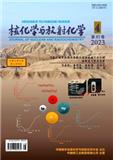
核化学与放射化学
北核,CSCD,科核,高T2
CN中文-双月刊影响因子0.618
-
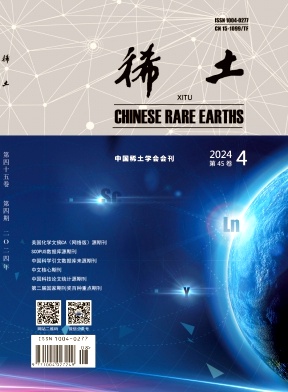
稀土
北核,科核,CSCD扩,武A-,高T2
CN中文-双月刊影响因子1.041
-
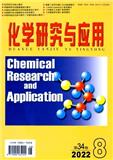
化学研究与应用
北核,科核,武B+
CN中文-月刊影响因子0.911
-
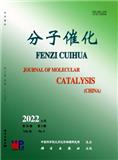
分子催化(中英文)
北核,科核,CSCD扩,武A
CN中文-双月刊影响因子1.802
-
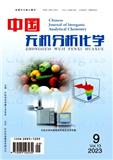
中国无机分析化学(原:中国无机分析化学文摘)
北核,高T3,CACJ-权威,武B+
CN中文-月刊影响因子1.591
-
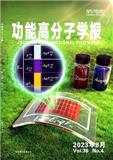
功能高分子学报
北核,CSCD,科核,高T2,武B+
CN中文-双月刊影响因子1.206
-

质谱学报
北核,CSCD,科核,高T2,EI(中国2024),武B+
CN中文-双月刊影响因子1.348
-
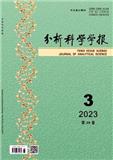
分析科学学报
北核,科核,CSCD扩,武B+
CN中文-双月刊影响因子1.227
常见问题
-
中国化学杂志社官网、联系方式是什么?
中国化学杂志社官网:http://www.cjc.wiley-vch.de
投稿网址:http://mc.manuscriptcentral.com/cjoc
投稿邮箱:masm@mail.sioc.ac.cn(主编)cjc@sioc.ac.cn(编辑部)(官网邮箱) -
中国化学杂志是核心期刊么?
中国化学是核心期刊,级别是:CSCD,科核, 是:化学分类下的万方目次,维普目次收录的期刊。
-
请问你们是中国化学杂志社吗?
我们不是《中国化学》杂志社。本站主要从事期刊信息展示与期刊推荐,不是任何杂志官网,直投稿件请联系杂志社。本站仅提供免费的学术指导、论文辅导、期刊投稿信息整理收集服务。
-
你们指导服务后可以保证文章被发表吗?
期刊发表的成功与否,主要取决于文章内容的质量。编辑老师会根据研究领域、创新性等多因素进行考量。我们会帮助您理解期刊的发表要求,助力提升发表几率,从而增加发表的机会。
-
晋级论文能否在报纸上发表?
在学术界,论文的发表往往被视为研究者职业发展的重要一环。晋级论文,即为了获得更高职称或学术地位而撰写的学术论文,通常需在专业期刊上发表。然而,许多人可能会问
